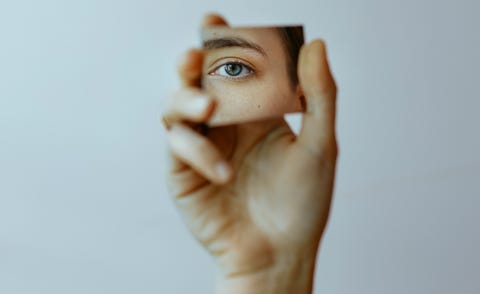ATA5:

The point of assignment five was to do five good deeds to people throughout the week; then, I described my feelings and the reaction to the nice acts. I went out of my way to do some selfless deeds to both people I knew and strangers. For example, I took my coworker’s shift on my off day, I paid for someone’s order in the drive thru, and I paid an expired meter. This concept can be related to when I learned about altruism in psychology. Altruism is the selfless willingness or kindness to help people without any benefit to yourself. I wanted to do these good deeds without feeling the need to receive thanks. Overall, knowing that I could make a person’s day a little better made me feel content. The assignment was personally relevant to me because I want to enact this into my everyday life. I want to go out of my way to do a few acts of kindness to strangers, family, or friends more regularly. The picture above is a visual representation of selfless and kind acts. There is no benefit to yourself. The whole point is to help others reach their goals, ambitions, or tasks without receiving recognition.
ATA4:

The point of assignment four was to take the Styles of Love Questionnaire and analyze how my scores compared to those of my gender. My results determined my attitude towards love and relationships. I then applied my scores to the relationship that I am currently in. I found that I expected my scores to be the way they were. The qualities that I value in relationships were evident in my scores. This assignment can be related to the readings from Chapter Four’s “The Self” from the textbook. My scores as a result of my behavior reflected my self-concept, self-presentation, and my sense of self. My results and answers to some of the questions allowed me to self-reflect and determine that excessive planning for the future could potentially be the downfall to my relationships. I cannot worry too much about the past or the future. I create problems that don’t exist by worrying about these things. The image above is a cute representation of complimentary similarities of individuals in love. I think it is so interesting and cute when you see a couple that is so different, yet they compliment each other so well.
ATA2:

https://images.search.yahoo.com/search/images;_ylt=AwrE19_ugsZgQMoA0FpXNyoA;_ylu=Y29sbwNiZjEEcG9zAzEEdnRpZAMEc2VjA3BpdnM-?p=8+problems+caused+by+low+self+esteem&fr2=piv-web&fr=mcafee#id=35&iurl=https%3A%2F%2Fhips.hearstapps.com%2Fhmg-prod.s3.amazonaws.com%2Fimages%2Flow-self-esteem-1610373123.jpg%3Fcrop%3D1.00xw%3A0.503xh%3B0%2C0.274xh%26resize%3D480%3A*&action=click
The point of assignment 2 was to look at pictures of myself and describe how my choice of candid shots, selfies, and poses photos represented myself. This assignment allowed me to look at myself through a different perspective and reflect upon my perceived self-concept, self-control, and self-presentation. This analysis of myself can be related to when I learned about one’s sense of self in my intro to psychology class. This is the concept of what a person thinks about themselves, mentally and physically. This sense of self develops early in life and it adjusts and evolves throughout the life span. As a result of this project, I found that my outer appearance often reflected my inner thoughts in my pictures. My insecurities are often shown if I am hyper-aware of my appearance while being photographed. Ultimately worrying too much on things like image is more detrimental to myself than beneficial. I want to practice thinking about how happy I am as I choose to document the moment with a picture instead of worrying so much about my appearance. The image above represents me looking at myself from a different perspective in order to have a deeper understanding and sense of myself.
ATA1:

The purpose of the first assignment was to explain heuristics. Heuristics are a form of reasoning that are used to come to conclusions. Essentially, they are mental shortcuts in order to make decisions. Unfortunately, this way of thinking can lead to inaccurate inferences. Heuristics impact my life every day. They play a role in my decision making and problem-solving skills. For example, I use the representative heuristic when I make an educated guess when I do not know a specific answer on a test. I will quickly make the judgment of the possible correct answer based upon a prototype that already exists in my mind. In my sociology class this summer, I recently learned about the sociological imagination. The availability heuristic plays a part in defining one’s sociological imagination by using one’s memories as examples to come to conclusions from a larger point of view, instead of individually. The picture above is an example of the availability heuristic in which fear is amplified and greatly influences one’s judgments and decision making.